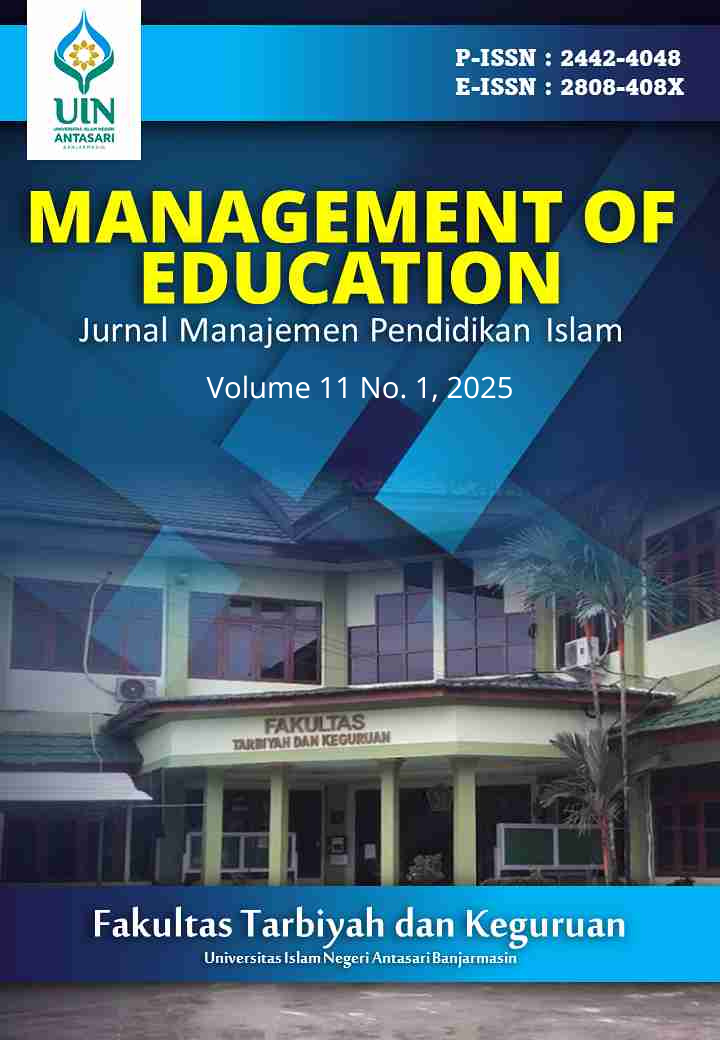A Systematic Review of Exit Exams in Higher Education: The Upsides and Downsides
DOI:
https://doi.org/10.18592/moe.v11i1.16120Keywords:
Accountability; Exit Exams; Higher Education, Upsides of Exit Exams; Downsides of Exit Exams; Standardization; PRISMA; PICOAbstract
Exit exams in higher education have both upsides and downsides. This review examines their impact using the PRISMA methodology. It analyzes 22 empirical studies published between 1994 and 2024. The search covered databases like Google Scholar, ERIC, PubMed, Scopus, and Web of Science. A thematic narrative synthesis was used to evaluate the findings. Exit exams improve accountability and standardize assessments. They align curricula with learning goals. This ensures consistent educational quality across institutions. Students gain job-ready skills, enhancing employability. Exams also promote critical thinking and inclusivity. However, downsides exist. High-stakes exams increase student stress and anxiety. They may lead to "teaching to the test," narrowing curricula. Creativity and deeper learning can suffer. Equity concerns arise due to cultural and socioeconomic disparities. Underrepresented groups often face disadvantages. The review highlights a need for balance. While exams raise standards, their risks must be managed. Support systems can reduce student stress. Diverse assessment methods should complement exams. Equitable access to resources is crucial. Policymakers and educators must collaborate for fair practices. Ongoing research is needed. Future studies should explore long-term impacts on students. Cross-cultural comparisons can identify best practices. Alternative assessment models may offer solutions. Addressing equity gaps remains a priority. In conclusion, exit exams have clear upsides but significant downsides. A balanced approach is essential. This ensures that exams enhance education without harming students. Continuous evaluation and adaptation are key to maximizing upsides while minimizing harm.References
Ackeren, I., Block, R., Klein, E., & Kühn, S. M. (2012). The impact of statewide exit exams: A descriptive case study of three German states with differing low-stakes exam regimes. Education Policy Analysis Archives, 20(8), 1–32. https://doi.org/10.14507/epaa.v20n8.2012
Aristeidou, M., Cross, S., Rossade, K.-D., Wood, C., Rees, T., & Paci, P. (2024). Online exams in higher education: Exploring distance learning students’ acceptance and satisfaction. Journal of Computer Assisted Learning, 40(1), 342–359. https://doi.org/10.1111/jcal.12888
Athiworakun, C., & Adunyarittigun, D. (2022). Investigating washback effects on teaching: A case study of an exit examination at the higher education level. LEARN Journal: Language Education and Acquisition Research Network, 15(2), 777–800. https://so04.tci-thaijo.org/index.php/LEARN/article/view/259951
Baker, D. (2019). Pathways to racial equality in higher education: Modeling the antecedents of state affirmative action bans. American Research Journal, 56(5), 1861–1895. https://www.Wiley.org/stable/45200627
Benner, A. (2023). Exit examinations, peer academic climate, and adolescents’ developmental outcomes. Journal of School Psychology, 51(1), 67–80. https://doi.org/10.1016/J.JSP.2012.09.001
Bishop, J. (1999). Are national exit examinations important for educational efficiency? Swedish Economic Policy Review, 6, 349–398. https://hdl.handle.net/1813/75286
Bracey, G. (2009). Mandatory exit exams discourage graduation: Research does not support political claims that exit exams improve graduation results. Phi Delta Kappan, 91(3), 88–95. https://doi.org/10.1177/003172170909100322
Carol, A. V., & Brown, M. F. (1994). The development of an exit examination in criminal justice for graduating seniors: A case study. Journal of Criminal Justice Education, 5(1), 49–57. https://doi.org/10.1080/10511259400083081
Dehury, R. (2017). Exit exams for medical graduates: A guarantee of quality? Indian Journal of Medical Ethics, 2(3), 190–193. https://doi.org/10.20529/IJME.2017.037
Fanjoy, R. (2005). Exit exams for college flight programs: Redundant activity or certification of competency? The Collegiate Aviation Review International, 23(1), 24–31. https://doi.org/10.22488/okstate.18.100333
French, S. (2023). A review of the upsides and downsides of high-stakes final examinations in higher education. The International Journal of Higher Education, 88, 893–918. https://doi.org/10.1007/s10734-023-01148-z
Hughes, F. (2001). The Achilles heel of university-industry partnerships. Annual Conference Proceedings, 6, 980.1–980.5. https://doi.org/10.18260/1-2--8883
Khan, H., Sebu, Gaur, P., Kumar, A., & Rahman, M. U. (2023). Pharmacy exit exam for the upliftment of profession of pharmacy practice in India: A review. International Journal of Pharma Professional’s Research (IJPPR), 14(4), 107–112. https://doi.org/10.48165/ijppronline.2023.14408
Leigh, S. (2012). The classroom is alive with the sound of thinking: The power of the exit slip. The International Journal of Teaching and Learning in Higher Education, 24(2), 189–196. http://www.isetl.org/ijtlhe/
Merki, K. (2011). Effects of the implementation of state-wide exit exams on students’ self-regulated learning. Studies in Educational Evaluation, 37, 196–205. https://doi.org/10.1016/j.stueduc.2011.12.001
Moore, L. C., Goldsberry, J., Fowler, C., & Handwerker, S. (2021). Academic and nonacademic predictors of BSN student success on the HESI exit exam. CIN: Computers, Informatics, Nursing, 39(10), 570. https://doi.org/10.1097/CIN.0000000000000741
Pioplunink, M. (2013). Central school exit exams and labor-market outcomes. European Journal of Political Economy, 31, 93–108. https://doi.org/10.1016/J.EJPOLECO.2013.04.005
Teshome, S. W. (2024). Exit exams in higher education: A systematic literature review. Science Journal of Education, 12(4), 71–76. https://doi.org/10.11648/j.sjedu.20241204.14
University of Munich, Germany, & Woessmann, L. (2018). Central exit exams improve student outcomes. IZA World of Labor, 1–10. https://doi.org/10.15185/izawol.419
Warren, J. R., & Grodsky, E. (2009). Exit exams harm students who fail them—And don’t upside students who pass them. Phi Delta Kappan, 90(9), 645–649. https://doi.org/10.1177/003172170909000908
Weir, T. (2010). Pretest/posttest assessment: The use of an entry/exit exam as an assessment tool for accredited and non-accredited journalism and mass communication programs. Journalism & Mass Communication Educator, 65(2), 123–141. https://doi.org/10.1177/107769581006500203
Downloads
Published
How to Cite
Issue
Section
License
Copyright (c) 2025 Samson Worku Teshome

This work is licensed under a Creative Commons Attribution 4.0 International License.
Authors who publish with this journal agree to the following terms:
- Authors retain copyright and grant the journal right of first publication with the work simultaneously licensed under a Creative Commons Attribution 4.0 International that allows others to share the work with an acknowledgement of the work's authorship and initial publication in this journal.
- Authors are able to enter into separate, additional contractual arrangements for the non-exclusive distribution of the journal's published version of the work (e.g., post it to an institutional repository or publish it in a book), with an acknowledgement of its initial publication in this journal.
- Authors are permitted and encouraged to post their work online (e.g., in institutional repositories or on their website) prior to and during the submission process, as it can lead to productive exchanges, as well as earlier and greater citation of published work.









 This work is licensed under a
This work is licensed under a 